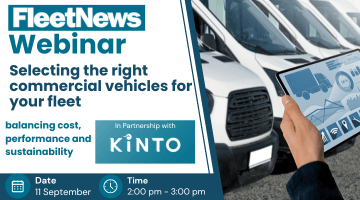Green transport policy can reduce overall costs
by Andrew Price, practice leader, Motor Fleet, Zurich Risk Engineering
 Transportation is usually one of the biggest contributors to an organisation’s carbon footprint, so it is something that they should be looking to manage effectively.
Transportation is usually one of the biggest contributors to an organisation’s carbon footprint, so it is something that they should be looking to manage effectively.
There are many synergies between what is good from an environmental perspective and what is good for safety, so organisations have an opportunity to manage both aspects and have the added benefit of reducing their overall costs through reduced fuel and collision costs.
So what can be done in practice?
The first thing is to look at initiatives such as the elimination of unnecessary journeys via solutions like video-conferencing, alternative forms of transport for certain journeys or by looking at operational issues such as territory allocation.
Vehicle selection – and this has to include the grey fleet – can also be addressed, and drivers can be encouraged to drive more defensively so they use less fuel.
There are also some simple things that every driver can do to improve their own fuel efficiency and safety.
Measures such as keeping their tyres correctly inflated (this is one of the most significant measures), ensuring that unnecessary weight is removed from the boot when possible and roof-racks are removed when not in use.
This, of course, entails the co-operation of the driver and, like many aspects of safety management, comes down to individual attitudes and values, something that is difficult for organisations to influence in the short term.
Businesses should look to develop a strong environmental culture as well as an on-road safety culture.
These are just some ideas on what organisations can do to help meet their environmental responsibilities and there are many benefits to effectively managing this now rather than in the future.
Tax rewards can help to encourage fleet safety
by Saul Jeavons, director, Transafe Network
 Safety has been high on the fleet agenda for a few years.
Safety has been high on the fleet agenda for a few years.
The Dykes Report and the HSE Driving at Work guidance meant that even fleet managers who had not been aware of the issues before really had no excuse for not having safety as a top priority.
The government says work-related road safety is a key issue for them, with more targeting to come for fleets. But what levers will they use to achieve change?
When it comes to the other fleet ‘hot potato’ of the environment, the government has rightly and effectively decided to use some financial leverage.
OK, so we could debate at length whether all of the measures have been the best way of achieving change or whether all of the measures have been fair, but overall they have applied pressure and change is resulting.
Fuel prices are playing their part too, but company car tax allowances, road tax levels and the rest do seem to be having an effect on at least some drivers over vehicle choice.
So what have they done to affect fleet safety in the same way? Not a lot.
No special tax breaks for companies for investing in safety through driver training. No reduced or increased company car tax allowances for fleet drivers depending on the EuroNCAP score of the vehicle chosen, or reduced road tax if electronic stability control is fitted.
So come on chancellor, let’s see something radical.
Decide on a series of measures that really improve fleet safety and use the tax system to reward the fleets and the drivers who pursue them.
Something is better than nothing.













Login to comment
Comments
No comments have been made yet.